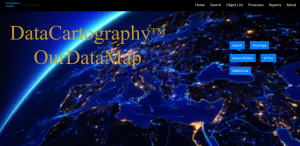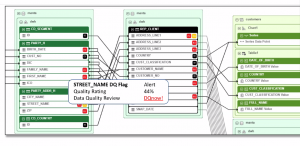DataCartography
 Artificial Intelligence, statistical analysis, and advanced analytics are critical for organizations to grow, thrive, and evolve to new levels.
Artificial Intelligence, statistical analysis, and advanced analytics are critical for organizations to grow, thrive, and evolve to new levels.
Tom Davenport once said that “Whenever knowledge technologies are applied to business problems, it’s tempting to attribute the benefit to the technology itself…. Certainly it requires an IT organization that knows the business and can work closely with key executives and knowledge-rich professionals. A ‘back room’ IT group could never successfully build a system of this type.”*
In the 1990’s, BI (Business Intelligence)/DW (data warehouse) ‘back room’ IT groups blazed trails with “just-good-enough” restated operational data. As data scientists of today demand higher quality, tightly unified data, companies find that important data is scattered among multiple systems, follows different rules, can’t connect data to business activities, and contain hidden “private” data.
The people who originally authored the systems were gone, and the paths of data were buried deep within scripts, databases, or tools. Compounding the problem: lack of standards in acquisitions, system migrations, and ERP systems. Planning, transformation, problem analysis, and cleansing is difficult to accomplish. “We’ve lost visibility into their own analytic applications,” said a VP of Information Technology.

DataCartographyTM brings the business professionals back into partnership with IT. Integration Expert DataCartographyTM combines services, tools, and philosophy to build data confidence. Business and IT managers share responsibilities to monitor and govern information:
- Corporate policy compliance and regulation (who sets corporate architecture and legal policy)
- Manage risk and general data security (how the business can use data)
- Master data management and data quality (what are the common business metrics and measures)
- Classify data, identify personal information (PII/PHI), and specific data security (who can’t see it; who masks it)
- Data and process stewardship (who gets to analyze it)
- Data lifecycle management (when to archive it)
DataCartography’s OurDataMap follows six simple steps
- Automate as much of the tracking and display of data and data flows within the organization as you can.

- Use this automation to track as much of the organization’s data flows as possible.
- Make it easy for approved users to see these structures and flows so that documentation, planning, and problem resolution don’t wait for the one corporate expert (if there is an expert).
- If tracking can’t be automated (IT calls these “black box” systems.), make it straightforward to continue flows with manual steps as they are documented over time.
- Add analysis information to enhance understanding, streamline projects, and document governance.
- Add or interface external processes to tie data into corporate governance programs
Why do we call it DataCartographyTM?

Maps link data stores and transformations
Most profiling or cataloging tools look at data stores–the tables or columns within databases–like disconnected silos that house grain or fertilizer. DataCartography looks at systems like a map: data ‘silos’ are like cities, and links connect the data between silos like roadways and Interstates. DataCartography scans SQL, scripts, reports, and transformation (ETL) tools such as Oracle/DB2/SQL Server/Teradata, Salesforce Tableau, IBM Information Server or Cognos, Informatica, and Microsoft SSIS/SSAS/SSRS and cross-connects with other key business areas such as Business Intelligence (e.g., enhance BI reports with derived statistical scores or AI indicators) and cloud stores (e.g. Snowflake).
DataCartography provides daily value by creating order from disordered IT infrastructure and publishes up-to-date, easy-to-follow maps used by both business and IT managers. Analysts easily link information specific to the organization to provide context, glossaries, stewardship, profiles, quality scores, and data science annotations.
*Thinking for a living: How to Get Better Performance and Results from Knowledge Workers (Tom Davenport, HBS Press, 2006)
DataCartographyTM is a registered trademark of Integration Expert, LLC. All rights reserved.